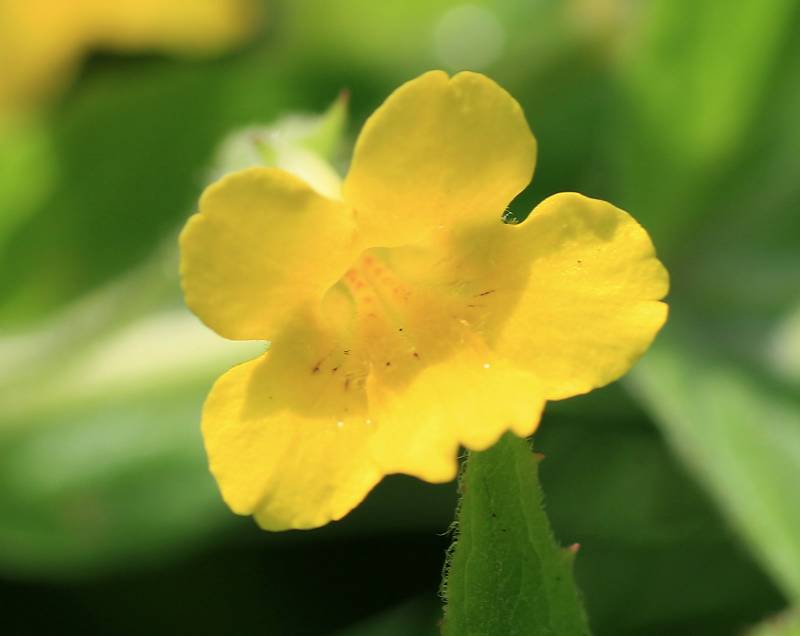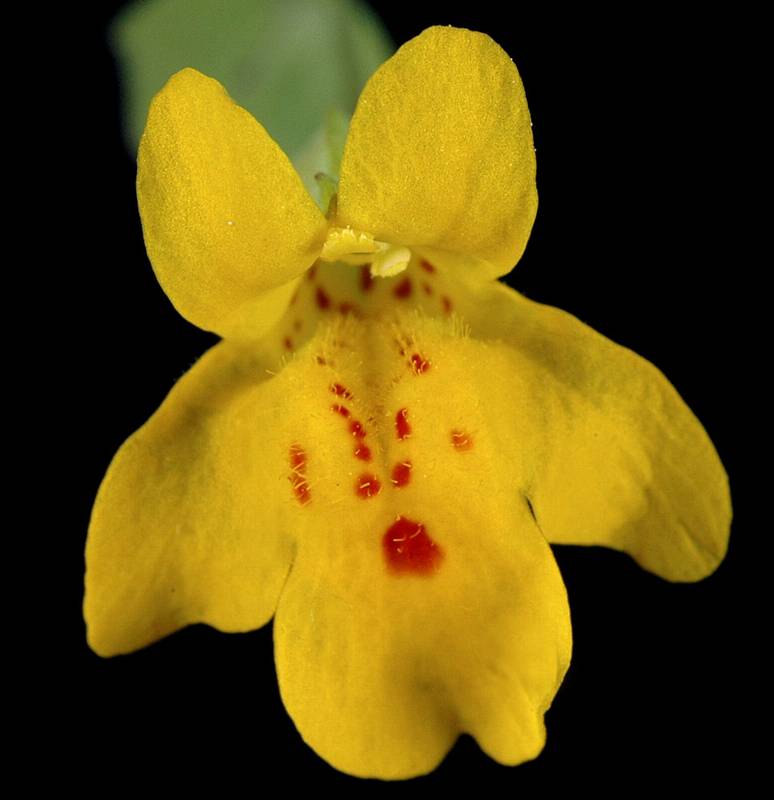Erythranthe ptilota
Erythranthe guttata
sessile-leaved monkey-flower
seep monkey-flower, yellow monkey-flower
Leaves cauline, basal ones not persistent, commonly congested; subsessile to sessile;
blade oblong to lanceolate, 30-70 mm long and 10-22 mm broad, pinnate venation, base rounded, margins toothed to finely toothed, apex acute, surfaces hairy as stems.
Leaves opposite, soft and often somewhat succulent, the blades from quite small to nearly 1 dm. long, irregularly dentate, ovate to reniform-cordate;
leaves nearly palmately veined, the 3-7 main veins arising near the base; lower leaves petiolate, becoming sessile upward, those of the inflorescence reduced and clasping.
Axillary flowers 4-10, emerging from nodes at mid- to ends of stems; fruiting pedicels generally 22-50 mm, hairy as stems;
calyx winged, cylindric-campanulate, barely inflated, 10-12 mm, villous with gland-tipped hairs, lobes spreading noticeably, strongly unequal, linear-lanceolate to slender-triangular, 5-9 mm, apex long acuminate-apiculate;
corollas yellow, throat faintly marked with blackish-brownish lines, symmetric almost radially or weakly bilaterally, nearly regular or weakly bilabiate;
tube-throat slenderly bell-shaped, 15-18 mm, protruding beyond calyx margin;
lobe apex rounded;
styles glabrous;
anthers not protruding, covered with fine hairs that are stiff to slightly rigid.
Flowers several to many in terminal racemes, on long pedicels, or solitary in dwarf forms;
calyx 5-toothed, irregular, the upper tooth much the largest, the 2 lower ones tending to fold upward;
corolla 1-4 cm. long, strongly bilabiate, with flaring throat, yellow with maroon dots or splotches on the pubescent lower lip;
stamens 4.
Capsules 6-8 mm, included.
Capsule.
Erythranthe ptilota
Erythranthe guttata
- Local floras:
BC,
CA,
WA
- Local Web sites:
CalFlora,
CalPhotos,
Flora NW,
PNW Herbaria
WildflowerSearch
iNaturalist (observations)
- LBJ Wildflower Center
- SEINet
- Plants of the World Online
- Encyclopedia of Life
- Wikipedia
- Google Image Search
- Local floras:
BC,
CA,
OR,
WA
- Local Web sites:
CalFlora,
CalPhotos,
Flora NW,
PNW Herbaria
WildflowerSearch
iNaturalist (observations)
- LBJ Wildflower Center
- SEINet
- Plants of the World Online
- Encyclopedia of Life
- Wikipedia
- Google Image Search



